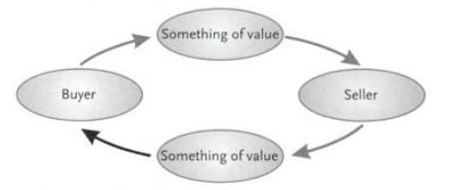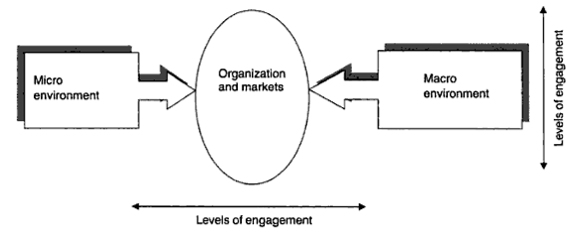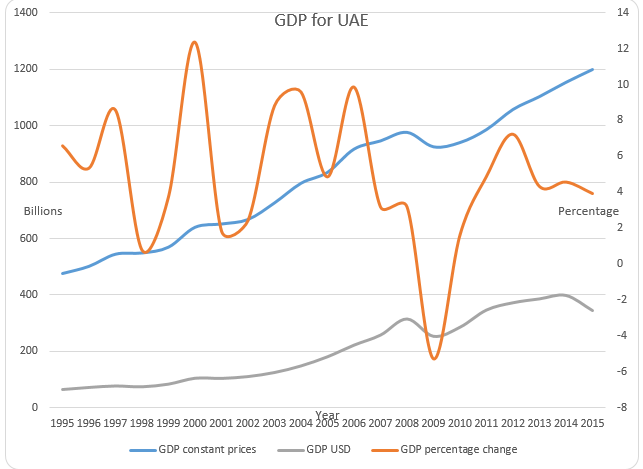The marketing function is a very critical requirement for any business setup and ensures that a business is able to create customers and distinguish its products from those of competitors. It is perhaps the most fundamental activity of any commercial organization and an essential discipline, even in non-commercial organizations (Mercer, 1996). Faced with increased competition in the business world, business owners are forced to be creative so as to stay in operation. Among the options used to attract customers are; product differentiation and cost leadership.
Definition of Marketing
Mercer (1996) argued that marketing is a widely used term that is often very misused and misunderstood. It has come to mean many things to different people. To some people, marketing is the human activity that is meant to satisfy the needs and wants of customers. It is also be defined as the social and managerial process by which individuals and groups obtain what they need and want through creating and exchanging products and value with others. Figure 1 shows the marketing exchange process that lies at the heart of modern marketing.

Chartered Institute of Marketing in the United Kingdom defines marketing as the management process that is responsible for identifying, anticipating and satisfying customer demands in a profitable manner (Mercer, 1996). In the study by Dransfield (2004), marketing is about understanding the customer and ensuring that the product and services match the existing and potential needs of customers. It is also about looking at ways of influencing the behaviour of customers (Dransfield, 2004).
The Marketing Concept
According to Silk (2006), marketing refers to what an organization must do to create and exchange value with customers. It plays a big role in setting a firm’s strategic direction. To succeed in marketing, an organization must have a deep understanding of customers, competitors and collaborators. The organization’s capabilities must be well deployed so as to meet customer demands effectively. It is therefore very important for any person with the responsibility to spearhead the growth of an organization not only to be insightful but also equipped with marketing skills. Studies have shown that the competitive advantage one firm may often gain over another result from its superior understanding of its customers and how it handles information it has about these customers (Silk, 2006).
Other authors have argued that marketing management is the application of marketing-related strategies and tactics to meet an organization’s stated goals (Moore & Pareek, 2009). According to this view, every single resource, whether human or otherwise, has a part to play in the marketing process. Moore and Pareek also identified two major objectives of marketing. The first is to attract new customers by highlighting the potential value of a good or service. It is often the case that one gets easily attracted to something when he or she can clearly see its value. This is a strategy that marketers usually employ to get new customers. There are instances where firms have failed to attract customers because the products or services being offered to the customers were not well defined. It is important for business enterprises to realize that getting customers is an active process that requires aggressiveness and innovation. It is very rare that customers will come to a business on their own (Moore & Pareek, 2009).
The second aim of marketing is to retain customers by continually meeting and surpassing the customers’ satisfaction with quality products. Researchers have discovered that as much as 80 per cent of a company’s revenue comes from as few as 20 per cent of a company’s repeat customers (Moore & Pareek, 2009).
Satisfied customers often find it easy to recommend the company’s products or services to others, and this greatly increases the total number of customers the company has. On the other hand, an unhappy customer can be very destructive and can quickly spread bad reports about the company far and wide. It is therefore very important that a company takes good care of its existing customers.
Companies that take existing clients for granted often pay dearly when they start losing them one by one. It does not matter how much influence advertisers claim to have over customers; a personal endorsement plays a major role in a purchasing decision than any form of a marketing campaign. If one was to take a moment and look at Google, for example, there is proof that with no formal advertising whatsoever, other than encouraging users to “spread the word”, the company has grown from being a very tiny start-up to be a market leader in Internet search. Today, Google stands out as the most popular search engine among many users of the Internet.
At my workplace, one of the things that all employees are encouraged to do is to ensure that customers are pleased with our services. Employees are so passionate about this to the extent that if one is made angry by a customer, he or she would rather not show it in front of the customer. On many occasions, offended employees have tactfully walked away from unhappy clients to evade trouble. The company has grown mostly from the good recommendations of past and existing customers, and everyone is convinced that word of mouth is the way to go. The company strongly believes that when a customer is not happy, he or she is likely to spread an unpleasant report about the company to about four potential customers. It, therefore, pays to ensure that existing customers are well taken care of.
Characteristics of a Market-Oriented Organization
A market-oriented organization defines its business in terms of the benefits sought after by the customers (Lamb, Hair & McDaniel, 201). However, being market-oriented and focusing on customer wants does not necessarily imply that the customers will always receive everything they want. The ultimate goal of most market-oriented organizations is to make a profit by creating customer value, providing customer satisfaction, and building long term relationships with customers. If an organization is not market-oriented, it will be quite difficult to market its products or services (Dransfield, 2004).
A market-oriented organization often targets specific groups of people. Taking a tertiary learning institution, for example, the marketing efforts will be directed to meeting the needs of high school leavers considering that they are the ones who most likely will be looking for what to do next after graduating from high school. Opportunities will certainly be wasted when the institution decides to focus on the older generations.
A market-oriented organization also recognizes the fact that different customer groups want different features or benefits. It may, therefore, need to develop different goods, services and promotional activities (Lamb, Hair & McDaniel, 2011). A market-oriented organization will also carefully analyze the market and divide it into groups with similar characteristics and then goes ahead to develop marketing programs that bring about, mutually satisfying interactions with one or more of these groups. Another characteristic of marketing-oriented organizations is to generate, share and use the information about the market to make decisions that lead to the creation of superior products, service quality that lead to superior performance (Mohr, Sengupta & Slater, 2009).
To become a market-oriented organization, it is critical for an organization to have strong leadership from top management, make decisions that take place as close as possible to the customer and put in place a reward system that recognizes the importance of information sharing as well as coordinated action.
Elements of the Marketing Concepts
The marketing concept requires that management thinking be directed toward profits rather than sales volume. The elements in marketing concepts have commonly been defined as “the four Ps”. While these are an oversimplification, they provide a simple framework that can be used to build a marketing program. The four Ps are product, place, promotion, and price. The product includes not only the actual physical attributes of the product but also product planning, product development, branding and packaging (Goeldner & Ritchie, 2009). Place, on the other hand, is concerned with the aspect of distribution. A firm has to determine what agencies, channels, and institutions can be linked together in the most effective manner to provide the consumer with easy access to the purchase of a company’s products. The company should know the best place to market its products or services. Promotion communicates the benefits of products to potential customers and includes advertising, sales promotion, public relations, and personal selling. Finally, the right price must satisfy customers and meet the company’s profit objectives. People and partnerships have also been identified as important marketing concepts elements (Goeldner & Ritchie, 2009).
Benefits and Costs of a Marketing Approach
The genesis of a marketing approach is the understanding of the market set up and the target customers. Huge costs are associated with the adoption of a marketing approach. A firm that wants to succeed based on a marketing approach must first and foremost ensure that it puts in place a structure that is focused on marketing. The company should be ready to incur the high costs necessary to provide excellent customer services. The company must also spend a considerable amount of its resources in building its products or services. Another focus will be to attract and retain customers. There is also the need to build long term solid relationships with customers, suppliers and distributors.
An organization that successfully implements a marketing approach enjoys a number of benefits that include winning customer loyalty and trust, increased profits from business and a better reputation.
The Concepts of Segmentation, Targeting and Positioning
Market segmentation involves aggregating prospective customers into groups that have common needs and likely to respond the same way to a specific marketing offer (Crane, 2009).
Iman (2006) defines segmentation as a process of placing the buyers in a product market into subgroups that display similar responsiveness to a particular marketing strategy. It involves identifying a subgroup within a larger group. Market segmentation is usually a strategy adopted to adjust products to specific needs within a diverse market (Iman, 2006).
The concept of segmentation is built on the premise that customers are different as they have different needs and behave in different ways. According to Iman, segmentation is based upon three propositions: consumers are different, the differences are created by the differences in market demand, and the segments of consumers can be isolated within the whole market (Iman, 2006). The obvious differences that are seen among customers pose a very big challenge for entrepreneurs and doing business would be probably easier if all customers were the same in every aspect. It, therefore, follows that for a firm to succeed, it must understand that proper market segmentation, targeting and positioning provide a very strong foundation for a successful business (Crane, 2009).
An entrepreneur must be able to determine the desired market segments, why these segments are important, how they will be sought after, the cost that will be involved in seeking these segments, and what the return on investments will be. A firm must segment markets so as to effectively respond to the specific needs of the customers and increase the company’s sales volume and profitability. Once the segments have been created, it is important for the company to determine which segments are of interest to the business.
Though quite desirable, effective segmenting markets is not an easy task. A good working knowledge of the market is required as well as common sense and good judgment. Various approaches to segmentation have been proposed and include; geographic segmentation, demographic segmentation, psychographic segmentation, and behavioural segmentation (Crane, 2009). Table 1 illustrates demographic segmentation.

Geographic segmentation allows the company to put customers together based on where they live or work and includes geographic units such as countries and cities or even neighbourhoods. Demographic segmentation divides the market based on population characteristics. Variables such as age, gender, income, education, and marital status are used in the segmentation exercise. Demographic segmentation is popular for two main reasons. First, customer needs are often tied to demographic characteristics, and secondly, it is easier to locate and measure demographic information on markets than measuring other variables (Crane, 2009). Segmentation may also be done based on multiple variables, as illustrated by figure 2.

Segmentation, targeting and positioning can be related as follows. Market segmentation subdivides customers into subgroups displaying similar characteristics or marketing responses. Market targeting then evaluates and selects one or more segments that a company chooses to serve. According to Dransfield (2004), once segments have been identified, organizations have to select one or more segments with a need that can best be met, and these form the targets. An organization can adopt a number of different targeting strategies, such as concentration targeting. Figure 3 illustrates the concept of concentration targeting with the shaded part indicated the targeted segment.

Market positioning combines marketing actions to meet the needs and wants for each target group using a suitable marketing mix and supporting services (Iman, 2006).
Macro and Micro Environmental Factors That Influence Marketing Decisions
Both business and marketing operate together within environments. These environments are usually classified as micro or macro. Figure 4 illustrates how they interact with the organization.

Micro Environmental Factors
The microenvironment can be described as the organizational environment. This environment defines the forces that an organization has control over. Figure 5 shows the microenvironmental forces that engage with the organization.

Some of these microenvironmental factors are explained in the following subsections.
Employees
Employees are very critical to the success of any organization. Consider, for example, a service industry. If employees in an organization are not dedicated to offering quality services to customers, the company will eventually find itself in big trouble when customers start disappearing because of poor quality services. The employees of the service provider are the interface between the customer and the service, and it is very easy for them to compromise the service if they wish to do so (Groucutt, Leadley & Forsyth, 2004).
Retired Employees
People who retire from an organization can remain a valuable asset to the organization. They may be consumers of the company’s services and word of mouth spokespersons. It is therefore equally important to ensure that retiring employees are treated with utmost dignity.
Trade Unions
Typically, trade unions are established to protect the interests of employees. However, when the relationship between an organization and trade unions is a good one, the outcomes tend to favour the organization. A bad relationship between management and trade unions greatly affects its customers.
Local Government
Local governments usually devise their own laws, and it is important for an organization to be aware of such laws and the impact they can have on their marketing activities.
Customers
Whenever customers are not interested in a company’s products or services, marketing becomes an uphill task. This emphasizes the importance of market segmentation.
Suppliers
Suppliers provide organizations with goods and services that are later transformed into value-added products for customers. Very often, suppliers are a vital component of an organization’s success. Table 2 shows the relationships that may exist between suppliers and their customers.
Table 2: Relationship between suppliers and customers.
Competitors
Unless an organization operates within a monopolistic environment, it will have competition within the market (Groucutt, Leadley & Forsyth, 2004). Competitors are a group of firms that produce products that are a close substitute for each other. It includes both product manufacturers and service providers. Marketing a product for which a competitor already has an advantage may be very difficult (Dransfield, 2004).
Macro Environmental Factors
These are environmental factors that directly affect industries as well as individual companies and organizations. They can lead to serious repercussions and must, therefore, never be underestimated by a company or an organization that wants to succeed. Figure 6 shows the microenvironmental factors that affect organizations and markets.

Some of these factors are explained in the following subsections.
Politics
This is a concern because of those who hold power influence both political decisions and consumer issues. It is, therefore, important for a company to be aware of the political environment.
Technological Factors
In marketing goods and services, organizations must become aware of new materials as well as developments in manufacturing and business processes (Dransfield, 2004). The technological environment includes the level of advancement in technical knowledge and equipment in society and the rate of their development and application. We live in an age of rapid technological change and understanding these changes is essential for any organization that wants to explore new opportunities. Marketers need to scan the environments in which the organization operates to understand the important changes that currently face them (Dransfield, 2004). It is important for organizations to consider how technological development impacts upon and supports its marketing objectives both now and in the future (Groucutt, Leadley & Forsyth, 2004).
Economy
The economy can have an effect on virtually all aspects of a business and marketing is not spared. It is, therefore, crucial for the marketer to have some level of understanding of how the economy works. In the period of economic recession when consumers have falling incomes, for example, it may be difficult to market a luxury product (Dransfield, 2004).
Social and Cultural Factors
For an organization to understand the social and cultural environment, it must closely analyze the society (Dransfield, 2004). Demographic changes such as population growth, movements and age distribution are important, as a change in cultural values and social trends such as family size and social behaviour. Social and cultural factors are very important in influencing marketing decisions, and it pays for an organization to stay abreast with social trends (Dransfield, 2004).
Environmental/Ecological Factors
Research has shown that ecological awareness is having a major impact on marketing. Environmental conservation has become a very important political issue and is being embraced by governments of different countries globally. In the present world, it is typical of consumers to make environmental concern an important factor in purchasing decisions when buying all manner of goods.
Legal Framework
There may be a number of laws constraining the activities of a business, and these may work against the success of the business. A market-focused firm will fully research all the constraints and try to find solutions that enable it to turn weaknesses into strengths and threats into opportunities (Dransfield, 2004).
Segmentation Criteria to be used for two Products in Different Markets
As clearly explained earlier, segmentation involves dividing the market into groups that have similar requirements. The groups may be defined by age, geographical location or any other relevant classification. This may be explained by looking at the following two cases.
The first case regards a company that wants to market a new brand of cooking oil to an urban population. Although various marketing strategies may be adopted to market the new product, it will be important for the marketer to determine what his or her target group is. The majority of people who fancy cooking are women and considering that most women also enjoy watching specific television programs, the marketer could liaise with broadcasters to find out the times when programs widely watched by women are televised. With this information, the marketer can then ensure that his or her advertisements are run when the said programs are shown.
The second case is one that involves marketing a washing detergent to a rural population that lives in an area that is less develop and watching television is a luxury. A marketing approach for the washing detergent requires the marketing team to find a way to reach the identified target group. The marketers could probably move around with a mobile cinema and making stops at nearby markets; the team could show videos of the product and how it is used so as to spread the news about the product.
In both cases, the marketer has to figure out the target group and come up with the best strategy to reach the customers.
Factors that Influence the Choice of Targeting Strategy
Among the factors that may influence the choice of targeting strategy are:
Competition
As pointed out earlier, it is only in a monopoly where a firm will face no competition. The success of the targeting strategy will thus be affected by the strength of the completion.
Desired Sales Volume
Based on how much the company needs to sell, it may be necessary to target only a particular market group to ensure that the expected sales volumes are realized. In most cases, this also determines the profit levels.
Consumer Demands
It is important for the marketer to establish what the customers really want. It makes no sense to try and target a group that is not interested in the product being sold.
The Strength and Maturity Level of the Market
In a mature market, it is almost clear to the marketer what the customers require where and when. Very little effort will thus be spent to know the right products or services to offer various groups and places.
Effect of Buyer Behavior on Marketing Activities in Two Different Buying Situations
Quite often, the buying culture of customers will affect the marketing activities of a firm. The following two scenarios will help to explain this. Consider a wildlife conservationist named Martha, who walks to a market place and wants to purchase a gift for a friend. She notices a nice decoration made of elephant tasks. There have been cries to save dying elephants, and she has been at the forefront of the campaign. The thought of having wildlife killed to produce items that were now being sold in the market displeases her and based on her convictions and passion for her crusade; she opts for a curving made of gold instead. In the second example, John is a vegetarian.
Lately, meat sellers have intensified efforts to get consumers to buy more meat claiming that prices have really gone down. For John, this is a strategy that can not work. He will stick to his diet and would not be moved at all with the call to buy cheap meat.
It, therefore, does not matter how much an organization is involved in marketing its products. As long as the behaviour of the buyers does not allow them to buy the products or services, the organization will be doing a futile job.
Application of Extended Marketing Mix to Different Marketing Segments and Contexts
Marketing Mixes for Two Different Segments in Consumer Markets
The marketing mix provides a useful way of looking at the marketing of products. Organizations need to create a successful mix of; the right product or service, sold in the right place, at the right price and using the most suitable form of promotion. The marketing mix is also regarded as a set of controllable variables that a company may use to influence the customers’ response (Dransfield, 2004). Figure 7 illustrates the elements of the marketing mix.

In marketing its products and services, it is possible for an organization to use a combination of different elements of the marketing mix to meet its sales objectives. I will use two scenarios to elaborate on the concept of the marketing mix. The first case refers to a competitive market environment with the same product manufactured by different firms. This segment consists of a wealthy population. The second case will examine a market segment that is made up of middle-class customers who are unable to afford a luxurious life.
In the first case, I will propose a marketing mix that focuses more on the product as well as place. Here, the product will be the most important element in the organizations’ marketing mixes. Closely associated with the product is branding. According to Dransfield (2004), people often buy the brand name as much as the product itself. It will, therefore, be vital for the organizations to tap on the strengths offered by their brand names. The power of branding is seen when consumers walk into a supermarket and purchase a new product just because it has been manufactured by a particular company. Considering that this market has companies offering products that are substitutes of each other, organizations will only reach their expected sales volumes if they bear a brand that is appealing to the customers. It will also be necessary for the organizations to target places in this market where they are sure that their brand is well recognized.
In the second scenario, I will suggest that the organizations include price and promotion in their marketing mix. The population here is not so wealthy, and as a result, people only make a purchase based on their needs. It is possible for consumers to ignore some products simply because they are in the habit of buying what they are used to. It will, therefore, take some promotional activities for organizations to create awareness about substitute products that are available. Marketers may need to move from place to place sensitizing buyers about their products. Coming up with affordable prices is also very important and must be at the centre of the organizations’ marketing strategies. It may be necessary for a firm to offer cost leadership so as to attract a greater number of consumers.
Marketing Products and Services to Organizations Rather than Consumers
Organizational markets or industrial markets are those markets that consist of buyers who purchase goods and services to be used in the production of other goods and services (Dransfield, 2004). Some organizations will sell their products in both the consumer and industrial markets. For example, motors manufacturer may produce cars for individuals to buy as well as commercial vehicles for manufacturers to use (Dransfield, 2004). Marketing to organizations is sometimes referred to as Business to Business (B2B) while marketing to consumers is referred to as Business to Consumer (B2C).
When a company is selling its goods and services to other organizations, it still needs to understand the behaviour of its customers. The marketing principles that employed when considering individual consumers still need to be taken seriously. However, there are some notable differences. In marketing to organizations, a firm will tend to focus on building lasting relationships and ensuring that it gets the most out of such relationships.
Organizational marketing is also characterized by lengthy processes and in most cases, targets smaller markets. Organizational marketing also involves educating other organizations about the products or services being offered to them. An organization that seeks to market to other organizations but does not invest in sharpening the skills and knowledge of its employees may not go far with its marketing activities. It always the desire of organizations clearly to know what they are being offered. On the contrary, marketing to consumers is largely driven by the type of products that a firm produces. It is characterized by a simplified buying process and aims to reach a larger market environment. It is also common for organizations to purchase larger quantities, unlike individual consumers.
Differences between International Marketing and Domestic Marketing
The concept of international marketing has been reinforced by globalization and advancements in technology. As a universal activity, marketing transcends geographic, cultural and political borders to serve the needs of markets wherever they exist. International marketing usually involves the marketing of products in two or more countries (Dransfield, 2004). Although in some instances, it will involve trade between a business organization and customers in just one country, an organization may sell in many countries and manufacture in many other countries.
A number of reasons have led to the growth of international marketing. They include:
Desire to Improve the Standard of Living
Considering that no single country is self-sufficient, there is a need to depend on others and hence the need to import and export to other countries. Exporting overseas helps to pay for the imports that help to improve the standard of living (Dransfield, 2004).
Growth and Economies of Scale
Overseas trading may help to achieve growth, and this is true, especially in a country where the domestic market has stagnated and is not advancing. International trading also allows organizations to reduce their dependency on only a single market. By growing and expanding into an overseas market, an organization gets to benefit from greater economies of scale. This means that over a larger output, costs per unit are drastically reduced, and the supplier enjoys a competitive advantage (Dransfield, 2004).
Response to Competition
This is another reason for international trade. Intense competition at home, for example, may force a company to seek markets for its products or services overseas. Alternatively, where markets are largely dominated by companies that are involved in international trade, the only way for any company to compete them is also to trade internationally.
Economic Benefits in Developing Countries
Opportunities overseas may arise in developing countries where goods or services produced in more developed countries are in high demand. Sometimes, a number of economic benefits such as cheaper labour costs may exist in some countries, and this makes it worthwhile for traders to produce in such countries (Dransfield, 2004). The rules, regulations and economic conditions such as taxation and currency values that are established in another country may provide organizations with very useful opportunities to grow.
In certain areas, organizations have been able to import raw materials cheaply from the developing nations, process them into finished goods and export them back to the very countries that provided the raw materials. Both countries, therefore, benefit from each other. It is, however, important for the countries involved to trade based on an agreement that will deprive either party. Without such agreements, one party may easily take advantage of the other.
Globalization
Advances in technology are forcing organizations to change their approach to business. There is an increasing trend for organizations to broaden their perspective and go beyond national boundaries (Dransfield, 2004). Companies that are not able to make the big leap to becoming global will soon discover that they are becoming irrelevant and may be swallowed up by giant companies. Overcrowded and saturated home markets are also encouraging organizations to look for new customers and other opportunities in markets overseas. An effect of increasing globalization of markets is the increasing interdependence among markets and continued growth in opportunities for businesses desiring to develop an international presence (Dransfield, 2004).
Although quite similar when it comes to fundamental marketing principles, there are clear differences between international and domestic marketing. In domestic marketing, the marketing strategies used are geared towards influencing customers within the same country. A company operating in a domestic market only caters for local customers and does not need to bother with takes place in foreign markets. There are, however, possibilities that the company may be competing with other international companies. In international marketing, an organization endeavours to win international customers and competes against foreign companies.
Goods and services are often produced to be marketed in overseas markets. Whereas the coverage of a domestic market is very narrow, an international market is quite large and offers a greater number of opportunities. International marketing also has the advantage of generating foreign currency for an organization. The foreign currency may, later on, become very helpful when the economy begins to decline. Unlike domestic marketing, international marketing is, to a great extent, affected by political relationships and international laws as well as barriers.
Reference List
Crane, F. G., 2009. Marketing for Entrepreneurs: Concepts and Applications for New Ventures. Thousand Oaks, CA: SAGE Publications, Inc. Web.
Dransfield, R., 2004. Business for Foundation Degrees and Higher Awards. Oxford, UK: Heinemann Educational Publishers. Web.
Lamb, C. W., Hair, J. F. & McDaniel, C., 2011. Essentials of Marketing. Mason, OH: Cengage Learning. Web.
Goeldner, C. R. & Ritchie, B. J. R., 2009. Tourism: Principles, Practices, Philosophies. Hoboken, New Jersey: John Wiley & Sons. Web.
Groucutt, J., Leadley, P. & Forsyth, P., 2004. Marketing: Essential Principles, New Realities. Sterling, VA: Kogan Page Publishers. Web.
Iman, A. H. M., 2006. An Introduction to Property Marketing. Malaysia: Penerbit UTM. Web.
Mercer, D., 1996. Marketing. Malden, MA: Blackwell Publishers Inc. Web.
Mohr, J. J., Sengupta, S. & Slater, S. F., 2009. Marketing of High-Technology Products and Innovations. New Jersey: Pearson Prentice Hall. Web.
Moore, K. & Pareek, N., 2009. Marketing: the basics. New York, NY: Taylor & Francis e-Library. Web.
Silk, A. J., 2006. What Is Marketing? Boston, MA: Harvard Business School Press. Web.
